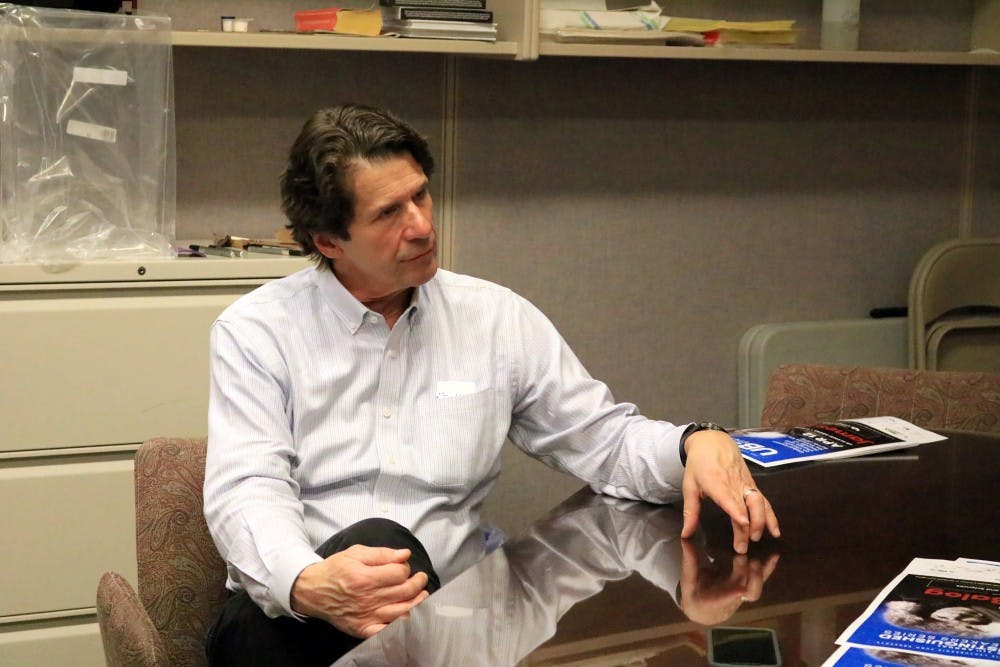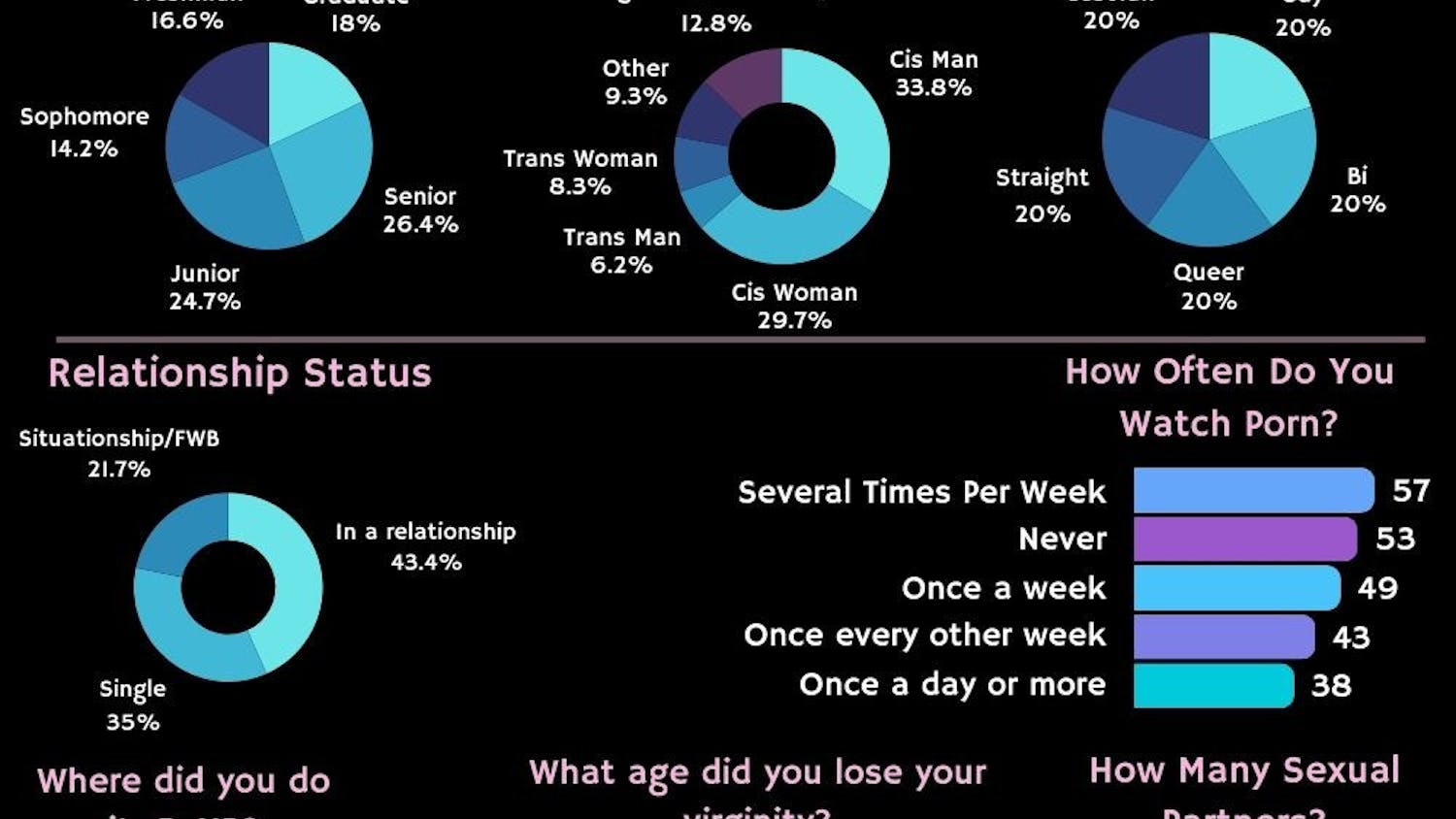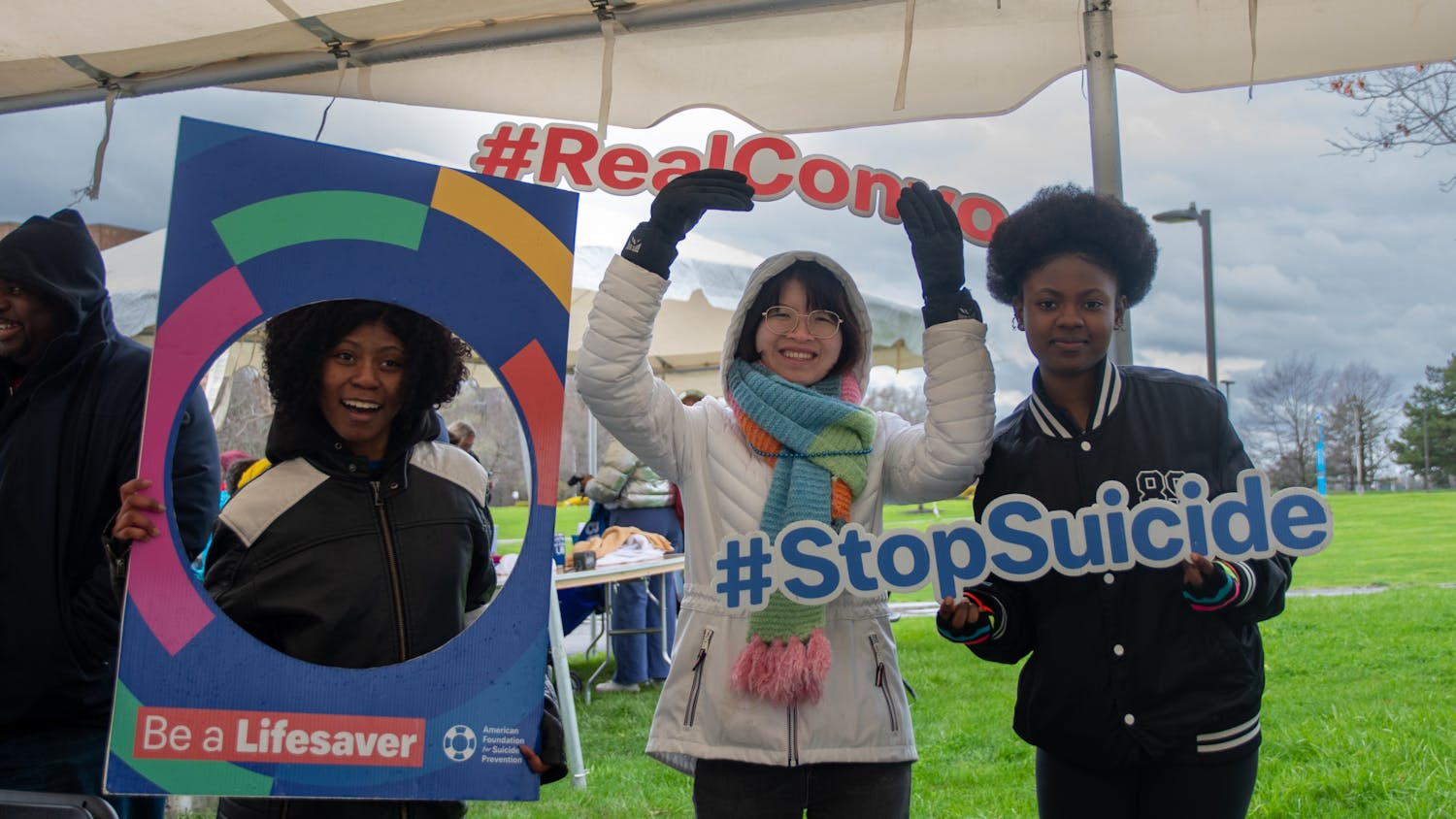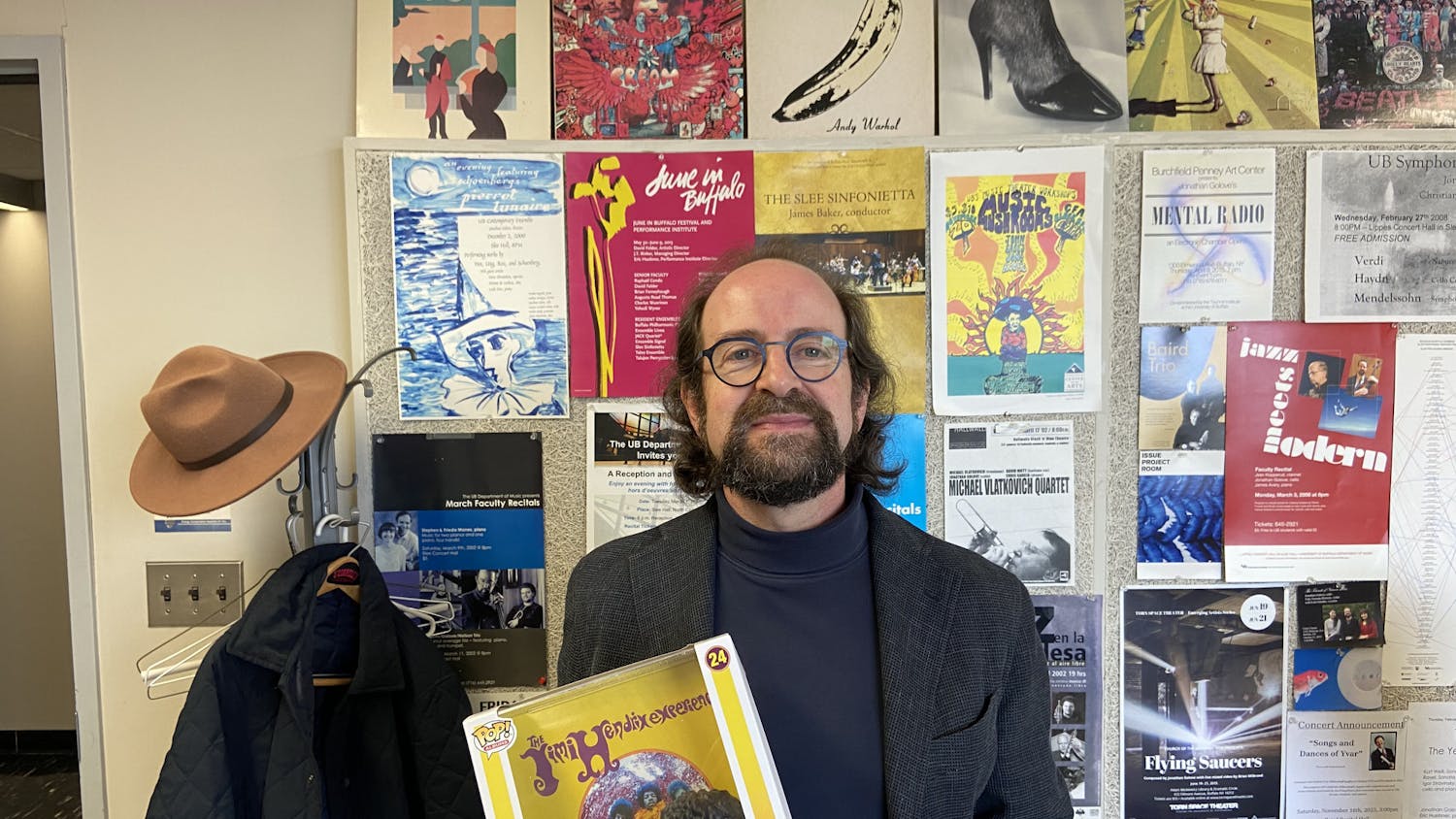James Balog has traveled the world, photographing and documenting the impact climate change has had on nature, including old-growth forests, glaciers and wildfires. He’s published eight books and two documentaries about his adventures and is preparing to travel to the North Pole this summer.
Before his Thursday night speech at this year’s Distinguished Speakers Series, Balog sat down with The Spectrum to discuss his work and climate change.
Q: How did how your journey of activism start? I read in the ‘80s you were a skeptic of climate change, what changed your opinion?
A: The information just added up, I started to become more and more aware. I had originally thought that the climate change story was all about computer models, because I’m a computer-phob I [didn’t trust them.] Then I learned more and I realized oh my god, it’s not about computer modeling, it’s about empirical evidence. The story is persuasive, the story is in the changing icy regions, of the world. So that’s what pulled me along about 20 plus years ago up until today.
Q: Talk about your work with the Extreme Ice Survey. You documented glaciers changing in Montana, Alaska, Greenland and Iceland. What did you discover and why these locations?
A: Right now as we sit here we have cameras in Antarctica, South Georgia, which is an island in the South Atlantic east of Argentina, Iceland Greenland, Montana and Alaska. We also have places that we revisit in Bolivia and the European Alps and Canada. So I picked those based on what I learned from regional specialists in these different areas to be representative of what’s going on ... In the end, it was a combination of what was a good representative glacier. And what could I get at? What were the logistics of access, the logistics of the camera position and the topography around the camera positions. All of those things had to come together.
Q: What can college students do to minimize their carbon footprint and their impact on the environment?
A: Drive less, that’s the big one. That’s the single most important one. Eat less meat, and you know, most of us probably eat too much meat, myself included. Some of us drive too much, myself included. But, you just keep doing the best you can, and what you have to realize is that nobody is perfect, there’s no one magic single silver bullet solution and it has to be said that our psychology, and this may be an American thing, or just a human thing, but our psychology is oriented around “just tell me one thing I can do, let me just do the one thing and get it out of the way and it’ll be fine.” There is no one thing, there’s a lot of things we need to do over a long arc of time and we just have to take one and do it, take another and do that step by step. I understand the problem of saying “my taking a shorter shower doesn't matter.” But it does, it matters to you and that’s what counts. And maybe that doesn’t matter in the long arc of geologic history, but it matters to you and your own life that you have done your part to bend the needle of the arc of history just a little bit in your own way. And you reshape that world around you. If enough people could get on board with reshaping the world around them, then we would have some major progress. And bit by bit, that’s happening, I don't know if enough is happening fast enough, but that’s really all there ever was and all there ever will be. It’s individuals doing these things. As a friend of mine says “We got into this pickle one tailpipe and one smokestack at a time.” And we have to go backwards in the same sort of incremental fashion and that may not be enough. But that’s all we get, nobody’s got the magic wand to say all of these big things are going to happen in the next two years, it’s just incremental progress all of the time.
Q: What’s your motivation? What drives you to get up every day to get up and continue being an activist?
A: I have the profound, intense undying sensation that I’m living in the middle of a gigantic piece of history that’s unfolding around me. Most people can’t see it, but it’s there nevertheless. And I’m aware of the fact that by virtue of my life experience, the skills and the training I have and the things I’ve seen, I can bear witness to those gigantic changes. It’s my responsibility to bear witness. I feel a keen sense of responsibility to bear witness. Maybe that comes from being the oldest brother in a family of three boys, because the oldest son is always the real responsible one. I just have this programing in my head that I have to show up and do what’s right. And this is what’s right.
Q: What message do you have for skeptics of climate change? Do you try to change their mind or educate them?
A: Basically, I try to educate them, I try and get them to look at the information with the rational part of their brains and not reject information with the ideological brains, and there are some people who will always be impervious to the information because their ideology is so fanatically and rabidly tied up with a whole bunch of other beliefs and I can’t crack through that. I just shrug shoulders and say “Sorry man, you’re behind the times.”
Q: A lot of people will never travel to these glaciers or all the places you’ve been to. Why should we care about these landmarks?
A: In my new film “The Human Element,” that story goes way beyond the icy regions of the world. It looks at sea level rises on the east coast, it looks at wildfires, it looks at contaminated air and how that affects your lungs and my lungs. There’s some impacts of environmental change that are easy for people to ignore. But I think that the one place where you can’t ignore it is in the air supply. Because we all breathe the air, it’s around us all the time. We’ve become habituated to living in an altered air supply. If the air supply has more carbon dioxide in it, it doesn’t impact our health, but if the air supply has a lot of extra chemicals in it, or it has particulates in it, that does impact our health. Most of us aren’t aware of that. But there’s 200,000 premature deaths from air pollution in the U.S. every year, the U.S. alone. There’s a million plus in China every year. These are big numbers. So I think altered air supply can be the unifying material that everyone can get their heads around and say “Oh sh*t, I don’t like on Chesapeake Bay where the ocean is rising, but everyone is breathing that contaminated air.”
Q: What has been your favorite project to work on? Glacier, nature or animal related?
A: I really don’t have one favorite one, each project really is a manifestation of where I am mentally, emotionally, unconsciously, creatively at any given time. They just kind of evolve one into the other.
Q: Tell me about the nuts and bolts of “The Human Element.” How long did the project take and what's one of your favorite moments?
A: The tagline on it is “We are a force of nature. As we change the elements the elements change us.” The premise is that many civilizations over the millennia have believed that earth air, water and fire were the fundamental elements of planetary existence. We’re proposing in this film that what they all missed is that people are too, and it didn’t make sense for people to be seen as a basic element 2,000 years ago, but it makes sense now. There’s seven billion plus of us, and with that combined population, the technology, the desire for affluence and survival and all the rest of it, we have an enormous impact on the basic material elements of planetary life. So our story is looking at how as we change the earth by digging up fossil fuels –– coal, oil and natural gas –– we alter the air supply. We alter the air supply –– that has impacts directly on people. Then that winds up melting ice because the air and the oceans get warmer. When the ice melts the seas come up, you impact the coastlines of the world. Then as the air heats up and dries up, certain parts of the world, certain areas are much more prone to wildfires. It's vitally important to recognize that humans can be positive and negative catalysts for change. These stories tend to be how we do bad things, but the fact of the matter is that we can also do good things. The film ends on a very hopeful note, where some coal miners in eastern Kentucky who blasted off the tops of mountains to remove coal are putting photovoltaics – 900 watts worth of solar panels across this mountain top and generate electricity in this land they messed up. It becomes a very inspiring end to the story. My grandfathers were both coal miners in Pennsylvania, my father’s father was killed in a coal mine collapse. I acknowledge in the film that the benefits I enjoy today are coming from those men and what they did, and yet I can also acknowledge that time and technology move on and the things my grandfathers had to do are replaced by new things we have to do today in response to different conditions. Times moves on, the Saudis are moving away from oil, you now, oil is done in 20 or 25 years, they’re going for solar and wind.
Max Kalnitz is a news editor and can be reached at max.kalnitz@ubspectrum.com





